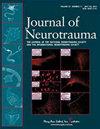孤立性创伤性脑损伤患者的入院收缩压与预后之间的关系:一项跨国多中心队列研究。
IF 3.9
2区 医学
Q1 CLINICAL NEUROLOGY
引用次数: 0
摘要
背景创伤性脑损伤(TBI)患者的最佳院前血压仍存在争议。我们的目的是评估急诊科分诊时的收缩压(SBP)与孤立性中重度 TBI 患者预后之间的关联。方法我们利用泛亚创伤预后研究数据库开展了一项跨国多中心回顾性队列研究,研究时间为 2016 年 1 月 1 日至 2018 年 11 月 30 日。研究对象为根据国际疾病分类代码定义的孤立性中重度创伤性脑损伤成年患者,分诊时格拉斯哥昏迷量表(GCS)<13,非头部简略损伤量表≤3。研究变量是分诊时的 SBP,分为不同的范围。主要结果是 30 天死亡率,次要结果是出院时功能状况不佳,定义为改良兰金量表≥ 4。多变量逻辑回归用于调整混杂因素,包括国家、性别、年龄、受伤机制、院前血管通路、呼吸频率、GCS、血氧饱和度、插管、受伤严重程度评分、头部手术、入住重症监护室和住院时间。结果共有 785 名患者(中位年龄 42 岁;男性患者占 77.5%;分诊时平均 SBP 为 136.3 ± 33.1 mmHg)被纳入主要分析。SBP 为 100-119 mmHg 的患者 30 天死亡率最低。以其为基线,SBP < 100 mmHg、120-139 mmHg、140-159 mmHg 和 ≥ 160 mmHg 的调整后几率比(aOR)和 95% 置信区间(CI)分别为 7.05(2.51-19.78)、3.14(1.14-8.65)、2.91(1.04-8.17)和 3.28(1.14-9.42)。至于次要结果,小于 100 mmHg 的 aOR 和 95% CI 分别为 1.36(0.68-2.68),120-139 mmHg 的 aOR 和 95% CI 分别为 0.99(0.57-1.70),140-159 mmHg 的 aOR 和 95% CI 分别为 1.23(0.67-2.25),≥ 160 mmHg 的 aOR 和 95% CI 分别为 1.52(0.78-2.95)。亚组分析显示,SBP 为 100-119 mmHg 的中度和重度 TBI 患者的预后均呈最佳趋势,而仅重度 TBI 患者的预后具有统计学意义。本文章由计算机程序翻译,如有差异,请以英文原文为准。
Association between admission systolic blood pressure and outcomes in patients with isolated traumatic brain injury: A cross-national multicentre cohort study.
BACKGROUND
The optimal prehospital blood pressure in patients following traumatic brain injury (TBI) remains controversial. We aimed to assess the association between the systolic blood pressure (SBP) at emergency department triage and patient outcomes following isolated moderate-to-severe TBI.
METHODS
We conducted a cross-national multicentre retrospective cohort study using the Pan-Asia Trauma Outcomes Study database from January 1, 2016, to November 30, 2018. The enrollees were adult patients with isolated moderate-to-severe TBI defined by the International Classification of Diseases code, a Glasgow Coma Scale (GCS) < 13 at triage, and a non-head Abbreviated Injury Scale ≤ 3. The studied variables were SBPs at triage categorised into different ranges. The primary outcome was 30-day mortality and the secondary outcome was poor functional status at hospital discharge defined by the modified Rankin Scale ≥ 4. Multivariable logistic regression were applied to adjust for confounders including country, sex, age, mechanism of injury, prehospital vascular access, respiratory rate, GCS, oxygen saturation, intubation, Injury Severity Score, head surgery, intensive care unit admission, and length of hospital stay. Subgroup analyses were performed on different severity of TBI.
RESULTS
A total of 785 patients (median age, 42 years; male patients 77.5%; mean SBP at triage, 136.3 ± 33.1 mmHg) were included in the primary analysis. The lowest 30-day mortality rate existed in patients with SBP of 100-119 mmHg. Taking it as baseline, the adjusted odds ratios (aORs) and 95% confidence intervals (CIs) of SBP < 100 mmHg, 120-139 mmHg, 140-159 mmHg, and ≥ 160mmHg were 7.05 (2.51-19.78), 3.14 (1.14-8.65), 2.91 (1.04-8.17), and 3.28 (1.14-9.42). As for the secondary outcome, the aORs and 95% CIs were 1.36 (0.68-2.68) of < 100 mmHg, 0.99 (0.57-1.70) of 120-139 mmHg, 1.23 (0.67-2.25) of 140-159 mmHg, and 1.52 (0.78-2.95) of ≥ 160 mmHg. Subgroup analyses revealed trends of the best outcomes in both moderate and severe TBI patients with SBP 100-119 mmHg, while statistical significance appeared only in patients with severe TBI.
CONCLUSIONS
SBP of 110-119 mmHg at triage is associated with the lowest 30-day mortality in patients following isolated moderate-to-severe TBI, and possibly related to a better functional outcome.
求助全文
通过发布文献求助,成功后即可免费获取论文全文。
去求助
来源期刊

Journal of neurotrauma
医学-临床神经学
CiteScore
9.20
自引率
7.10%
发文量
233
审稿时长
3 months
期刊介绍:
Journal of Neurotrauma is the flagship, peer-reviewed publication for reporting on the latest advances in both the clinical and laboratory investigation of traumatic brain and spinal cord injury. The Journal focuses on the basic pathobiology of injury to the central nervous system, while considering preclinical and clinical trials targeted at improving both the early management and long-term care and recovery of traumatically injured patients. This is the essential journal publishing cutting-edge basic and translational research in traumatically injured human and animal studies, with emphasis on neurodegenerative disease research linked to CNS trauma.
 求助内容:
求助内容: 应助结果提醒方式:
应助结果提醒方式:


